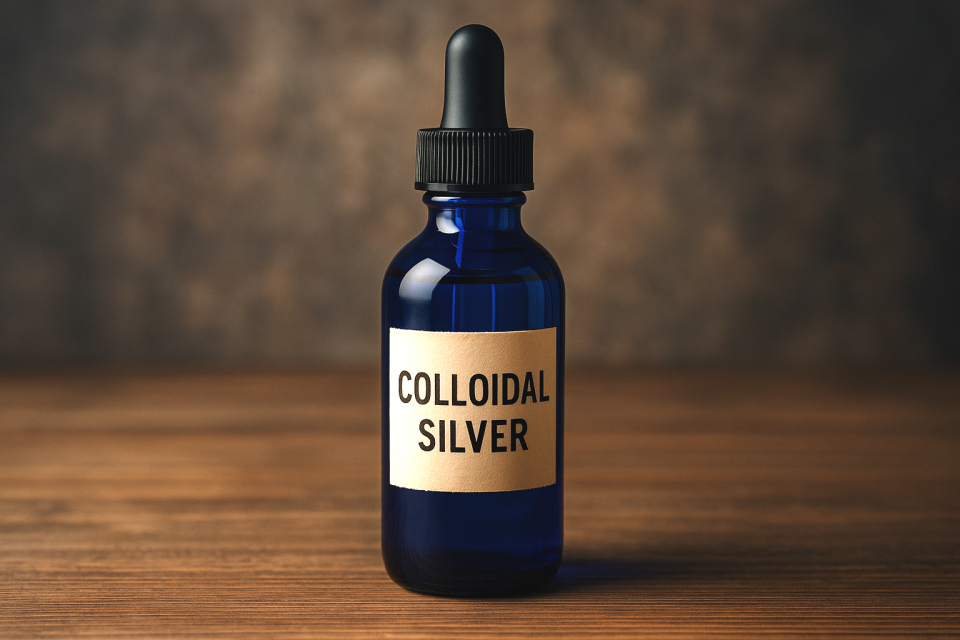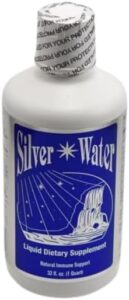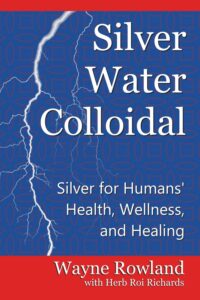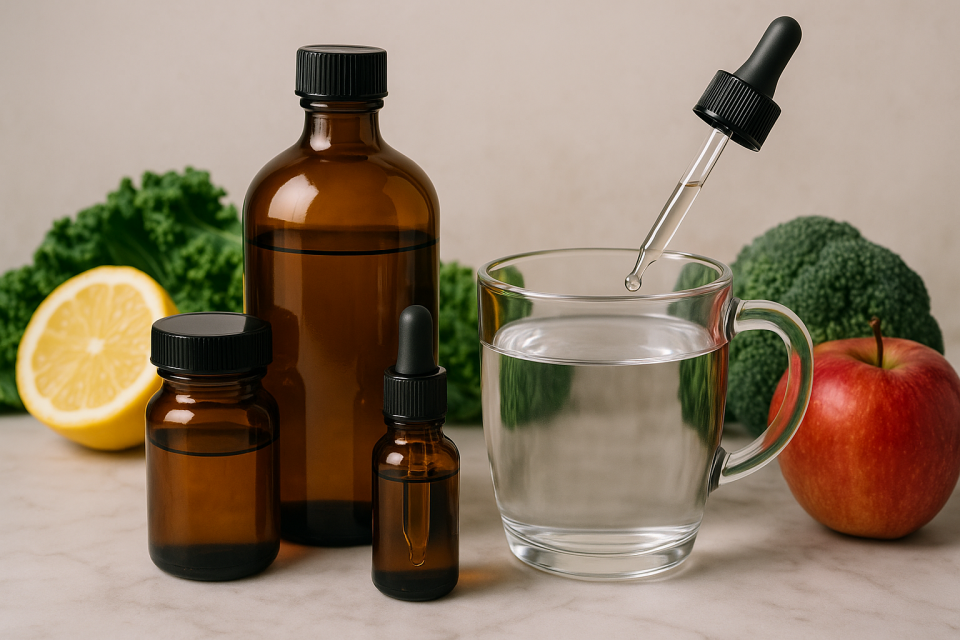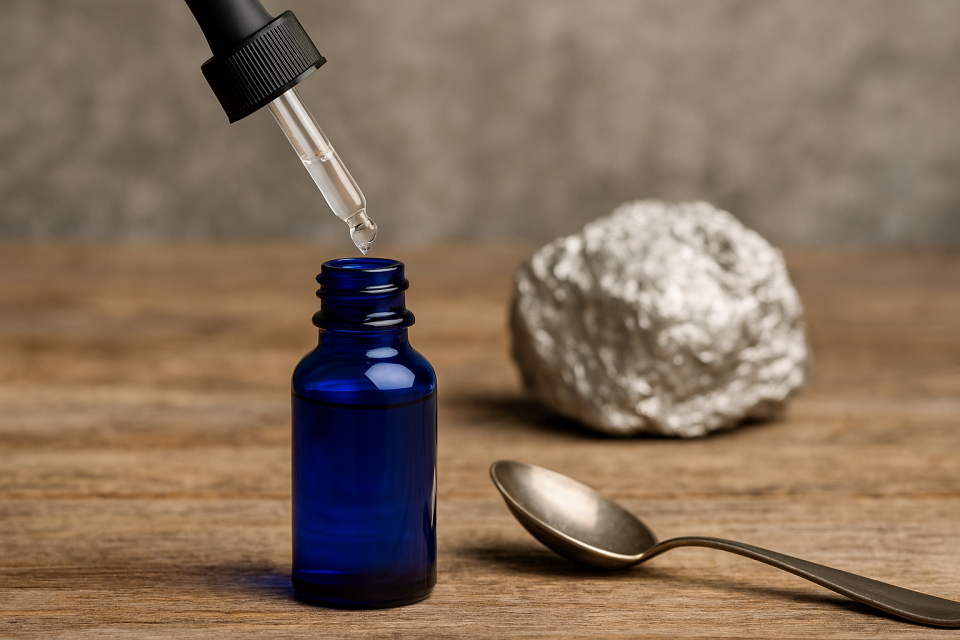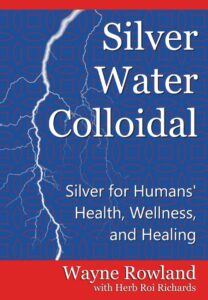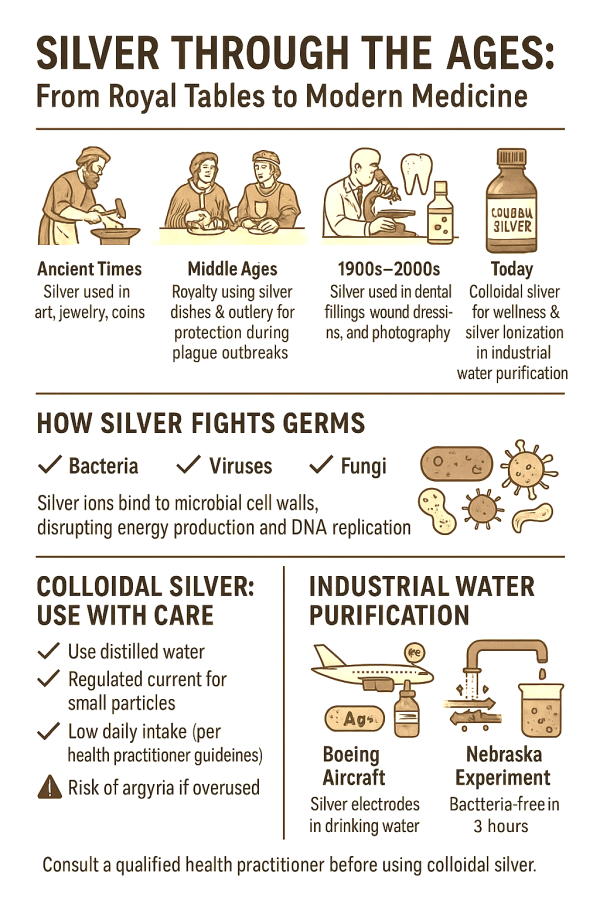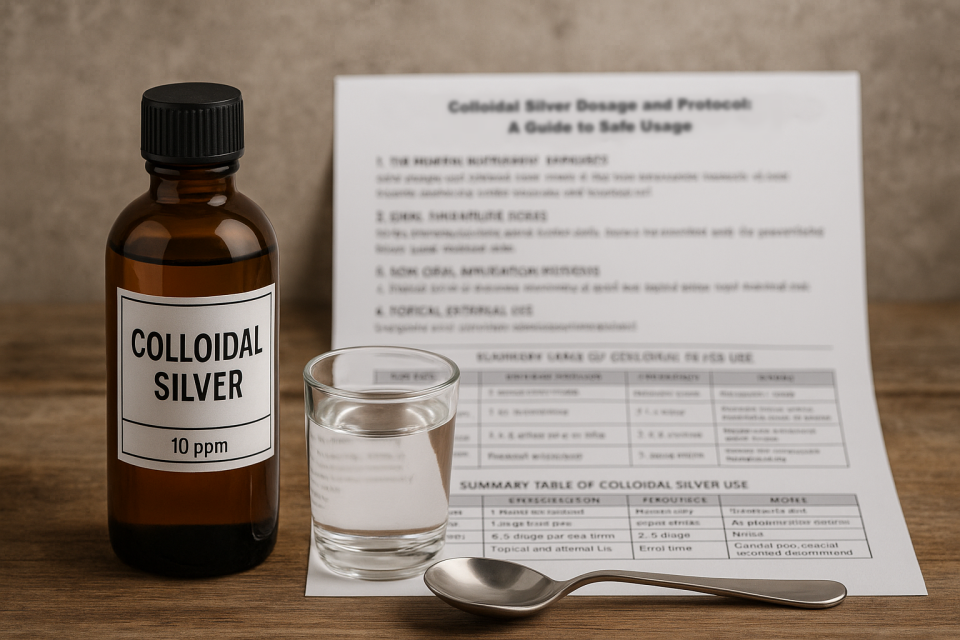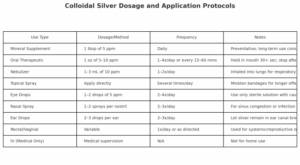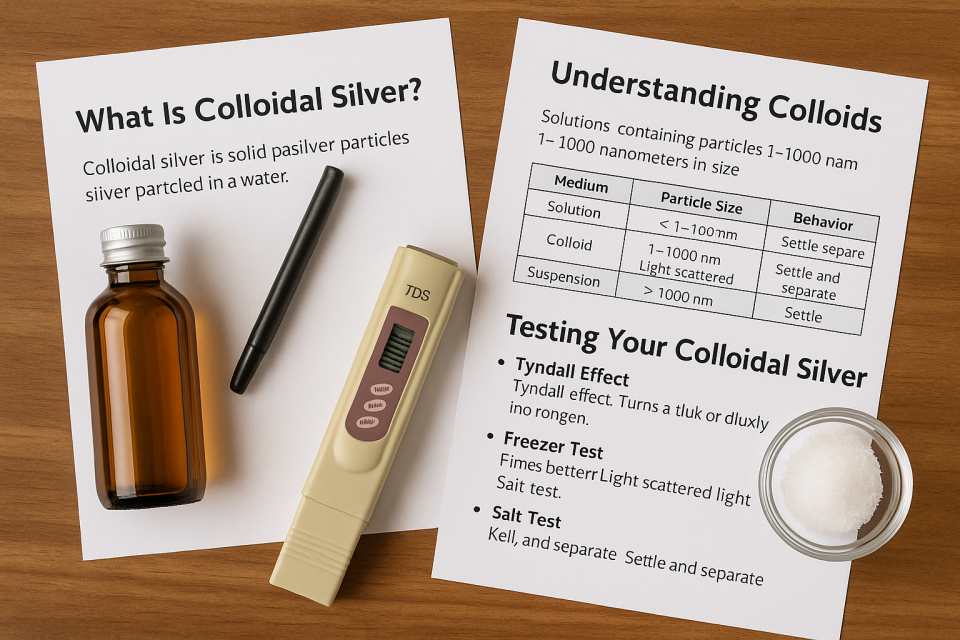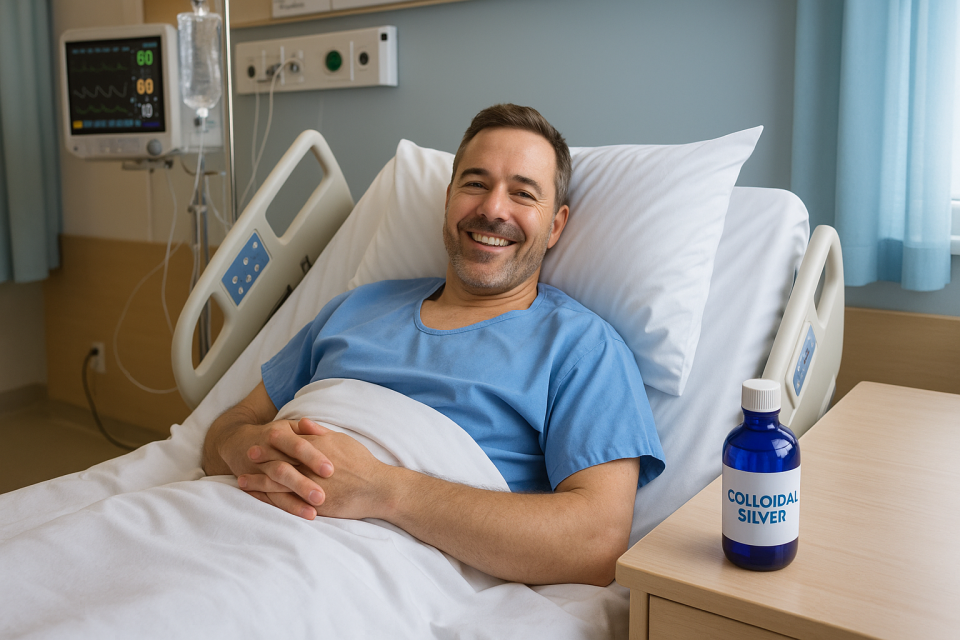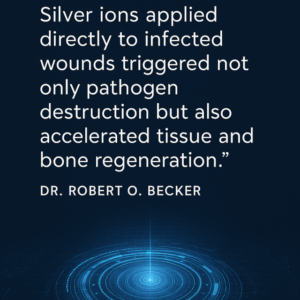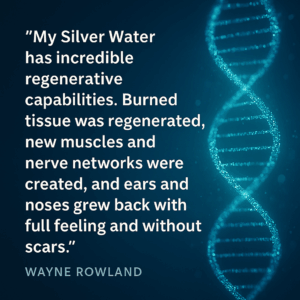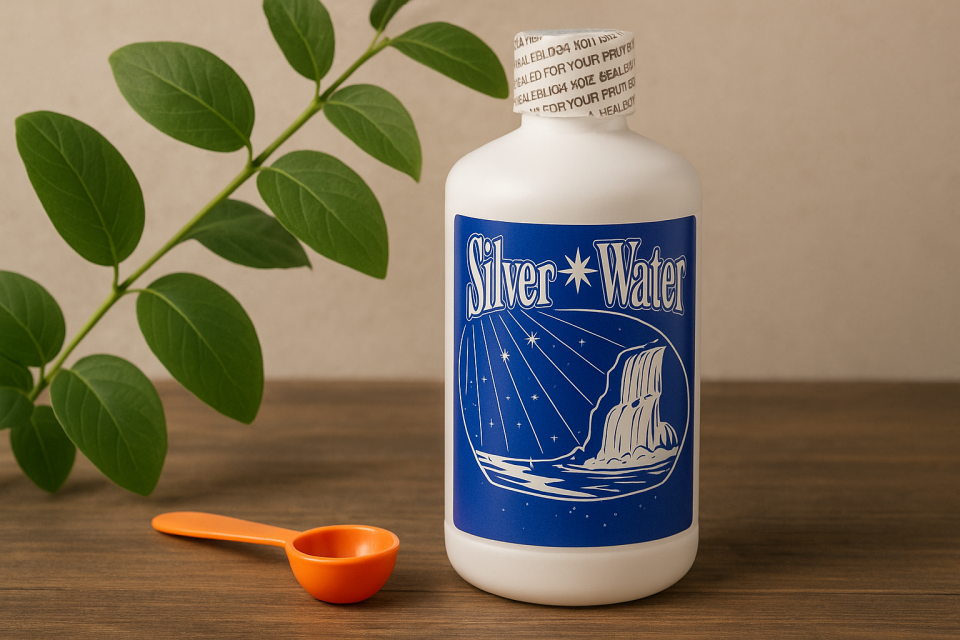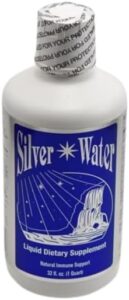Colloidal silver has long been regarded as one of the most powerful natural substances for supporting the body’s defense against harmful microorganisms. Its strength comes not from chemicals or additives, but from something much simpler: microscopic particles of pure metallic silver suspended in distilled water. These particles are so small, often only slightly larger than individual atoms, that a solution containing just five parts per million can neutralize single-celled organisms within minutes of contact.
Unlike silver salts, silver proteins, or other compounded products, true colloidal silver contains nothing but silver and water. The particles remain in suspension not because of stabilizers, but because of their electrical charge. This electrical charge keeps each particle separated, active, and able to continuously release fresh silver ions as needed, making colloidal silver uniquely effective for both immediate and sustained antimicrobial activity.
How Colloidal Silver Works
The key to silver’s extraordinary power lies in a phenomenon known as the oligodynamic effect, first documented in 1893 by Swiss botanist Karl Wilhelm von Nägeli. He discovered that metal ions, especially silver, could destroy microorganisms at concentrations so low they were almost immeasurable. Even at levels as tiny as 0.0000001%, silver ions were found to eliminate algae, molds, fungi, spores, bacteria, and viruses.
This discovery revealed something remarkable:
silver does not need high concentrations to be deadly to pathogens.
What makes this possible is how silver actually disables harmful organisms. Silver ions attack the most basic life functions in single-celled organisms:
- They disrupt enzymes crucial for respiration.
- They interfere with the organism’s ability to use oxygen.
- They damage membranes and structural proteins.
- They collapse viral protein coats, preventing replication.
Because these mechanisms target fundamental biological processes that simple organisms cannot adapt around, no pathogenic microorganism has ever developed resistance to silver, even after more than a century of use. Human cells, being far more complex, are not harmed by this selective activity.
In total, colloidal silver is documented to be effective against approximately 650 different organisms, making it one of the most diverse natural pathogen fighters ever recorded.
Pharmaceutical antibiotics typically work by poisoning or disabling a specific biological target. This is why pathogens can mutate to become resistant; they simply find a way around the chemical mechanism. Silver works differently.
It doesn’t poison pathogens; it renders them unable to function. The electrical activity of silver ions physically disrupts essential processes, regardless of the organism’s type or structure. This universal mechanism is why silver continues to succeed where many modern antibiotics fail, including against drug-resistant bacteria.
Safe Use and Compatibility With Other Treatments
Colloidal silver has no documented drug interactions, and for general use, most adults take two teaspoons daily of a 5–30 ppm solution as a maintenance dosage. Higher or more frequent doses are used during acute infections, and silver can be administered in multiple ways:
- Sublingual absorption (held under the tongue for 90 seconds)
- Nebulized application for respiratory support
- Topical application for cuts, burns, and skin issues
- Internal dosing for systemic support
Children receive smaller amounts based on weight.
Important Note: When Combining Silver With Chlorine Dioxide:
- Do not take colloidal silver with chlorine dioxide at the same time.
- Colloidal silver may be taken 30 minutes after CD.
- CD should not be taken until two hours after taking colloidal silver.
This timing protects the activity of both substances and ensures the best results.
Silver in Emergency Medicine and Preparedness
Because silver is stable, portable, and exceptionally broad-spectrum, it has been valued for generations as a reliable emergency tool. Dr. R.C. Beck’s simple 9-volt battery generator method demonstrates how silver can even be used to purify contaminated water in situations where no other help is available. Unsafe water can become drinkable in minutes when exposed to electrically generated silver particles.
In emergencies such as cuts, burns, food poisoning, or infections, both internal and external applications of colloidal silver act quickly and safely. This makes it an essential component of first-aid kits, survival packs, and remote medical supplies.
Dr. Robert O. Becker, an orthopedic surgeon and pioneer in electro-medicine, uncovered even more surprising abilities of silver. His research revealed that silver ions, especially when paired with gentle electrical currents, could activate the body’s regenerative systems, stimulating the production of dedifferentiated cells (a type of stem cell). These cells were capable of transforming into whatever tissue the body needed for healing.
Becker documented extraordinary findings:
- Silver-treated wounds healed faster than untreated wounds.
- The regenerated tissue was stronger, healthier, and more complete.
- Silver appeared to trigger repair mechanisms deep within the body’s electrical communication system.
- Some evidence even suggested that silver influenced abnormal or cancer-like cells in beneficial ways.
This work opened the door to modern research into silver-based nanotechnology, regenerative medicine, and advanced wound therapies.
Colloidal silver is not intended as a stand-alone cure-all; rather, it functions best as a powerful element within a holistic health strategy. When paired with clean nutrition, movement, hydration, proper sleep, and complementary natural therapies, silver supports the body’s natural ability to stay strong, recover quickly, and resist infection.
Its gentle compatibility with other treatments (when properly spaced) makes it an ideal foundational support tool for long-term wellness and emergency preparedness alike.
Colloidal silver remains one of the most respected natural antimicrobial substances ever discovered. Its ability to destroy pathogens, support tissue repair, purify water, and maintain safety at low concentrations sets it apart from nearly every other natural or pharmaceutical option available today.
Whether used as a daily immune-support tool, an emergency remedy, or part of an advanced regenerative protocol, colloidal silver continues to demonstrate why it has earned a place as one of nature’s most extraordinary allies in human health.
